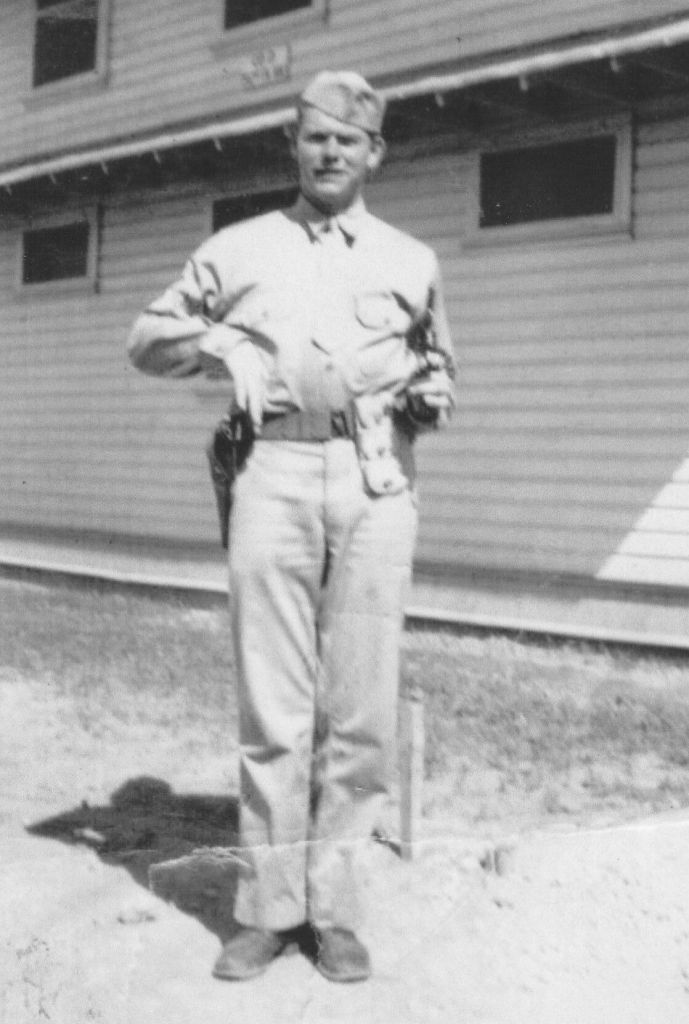Edmonson County WWII POW comes home next month
Published 8:00 am Friday, September 8, 2023

- U.S. Army private 1st class Thomas Franklin “Frank” Brooks, shown at Ft. Knox, was accounted for in June and will be buried with full military honors near his boyhood home in Edmonson County on Oct. 1. Brooks fought in WWII and died as a prisoner of war in the Philippines.
After spending more than eight decades unaccounted for, U.S. Army Pfc. Thomas Franklin Brooks will finally be laid to rest near his Edmonson County boyhood home next month.
The Defense POW/MIA Accounting Agency announced this week that Brooks had been identified in June thanks to dental and anthropological analysis of his remains. Brooks fought in World War II and died as a prisoner of war in the Philippines.
Trending
“This is a historic moment,” family spokeswoman Paula Ratliff told the Daily News. “We’re bringing home a POW from the Philippines, someone who’s been missing for 81 years.”
According to research compiled by Ratliff, Brooks – known as Frank to his loved ones – was born in 1919 and raised near Mammoth Cave National Park. He was the seventh of 12 children born to parents Charles Smith and Francis Isabell Priddy Brooks.
Out of the six boys in the family, five of them – including Brooks – joined the military.
Brooks traveled to Louisville to enlist, joining the Army on Jan. 20, 1941. Ratliff said his brother, Easol, went with him to join the military on the same day, along with a neighborhood friend.
“They all headed out to Louisville and signed up,” Ratliff said.
Brooks was stationed at Fort Knox as a member of the Kentucky Army National Guard 38th Tank Unit, later designated Company D, 192nd Light Tank Battalion when it entered active duty. The group earned the nickname of the “Harrodsburg Tankers.”
Trending
According to the Register of the Kentucky Historical Society, the unit was deemed combat-ready and recommended for overseas duty by Maj. Gen. George Patton after completing its maneuvers at Camp Polk, Louisiana, in September 1941.
“His unit was evaluated by some of the top military folks in the world,” Ratliff said. “We know (Brooks) took his work very seriously and worked very hard.”
She added that Brooks was a family-oriented young man, making the journey home on several occasions during his time at Fort Knox. Back then, that trip would have required a bus ride and a leg of hitchhiking.
“He would also bring other soldiers with him and introduce them to his family so they could have fellowship and good food and get off of the base for a while,” Ratliff said. “We know he was a good person. He was deeply connected with people.”
Brooks’ tanker unit was one of the first dispatched to the Philippines, arriving on Nov. 20 – Thanksgiving – 1941, mere weeks before the Japanese attack on Pearl Harbor.
Brooks’ men were attached to the 194th Tank Battalion shortly after arrival and did not have to wait long to enter close combat. Japanese forces invaded the islands Dec. 8.
Ratliff said Brooks made efforts to keep his family up to speed with life in the service, sending postcards and letters back home even in the midst of fighting.
“I have been lucky and haven’t gotten a scratch yet,” Brooks wrote to his parents in a letter dated Jan. 29, 1942.
By that point, Brooks would have been involved in fierce combat for over two months.
“He was a tough guy and he gave his all for our country,” Ratliff said. “Just an amazing man.”
Brooks and his battalion, along with Filipino forces, mounted a valiant fight against the Japanese from January to April 1942 in the Battle of Bataan. The allied forces were ordered to surrender after nearly four months of combat without reinforcement or resupply.
Members of Brooks’ unit that were not able to escape were forced on the “Bataan Death March” to the Cabanatuan POW camp, a 65-mile trek marked by brutality and death.
According to Ratliff’s research, Brooks was wounded during the fighting and taken to a field hospital on the Bataan peninsula. He was transferred to Cabanatuan in May and prison records indicate he survived there for eight months before dying at the age of 23 on Dec. 10.
He was buried in Common Grave 917 in the camp cemetery. According to Kentucky Army National Guard records, just 37 of the 66 Harrodsburg Tankers survived Japanese captivity.
Following the war, the American Graves Registration Service exhumed the remains of those buried at Cabanatuan and moved them to a U.S. military mausoleum near the city of Manila. In 1947, the AGRS identified five sets of remains from 917, but the rest were declared to be unidentifiable.
Those remains were buried as Unknowns at the Manila American Cemetery and Memorial until they were disinterred in 2018 for DPAA laboratory analysis, leading to the identification of Brooks.
The Edmonson County native will be buried with full military honors at the Hill Grove Missionary Baptist Cemetery in Mammoth Cave, a cemetery known for its “shell graves” – raised mounds decorated with mussel shells taken from nearby Nolin Lake.
Brooks will be laid to rest beside his parents.
According to Ratliff, Brooks is survived by 37 nieces and nephews and more than 200 great-nieces and great-nephews. His family will be presented with the Bronze Star, Purple Heart, POW, Army Good Conduct, American Defense Service, Asiatic/Pacific Campaign, WWII Victory and Philippine Defense medals.
Gov. Andy Beshear will order flags at half mast to honor Brooks on the day of the burial.
“It’s heartbreaking to learn about this loss, but we are thankful for those doing the work to finally identify so many of the unknown casualties of the war,” Beshear said. “We are grateful to bring Pfc. Frank Brooks home where he belongs.”
The graveside service is scheduled for 11 a.m. Oct. 1 at 1900 Dickeys Mill Road. There will be limited seating and attendees are encouraged to bring lawn chairs.
“It’s an event that should be shared with families,” Ratliff said. “It should be shared with children and young people, to honor our history and to learn what the cost of freedom is.”






